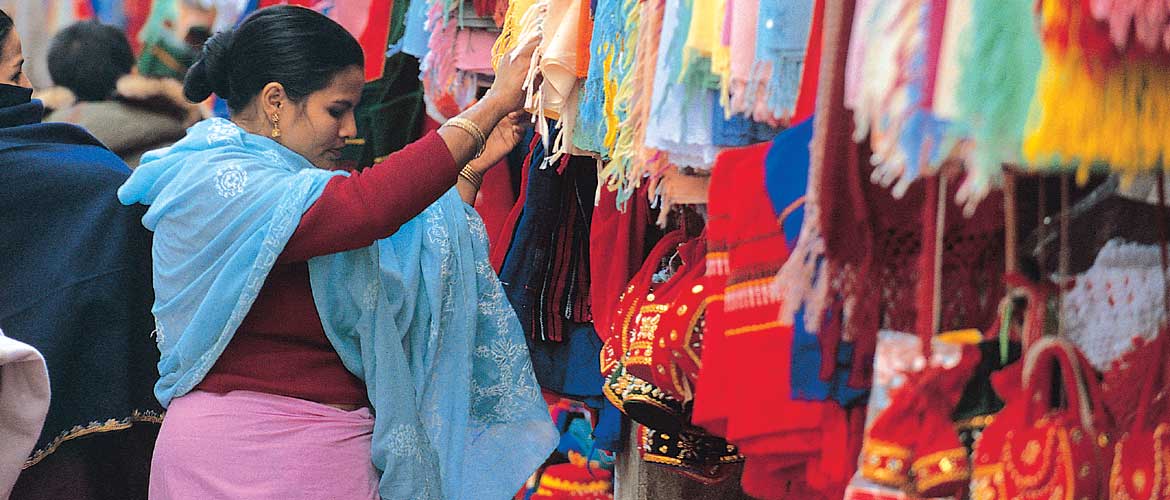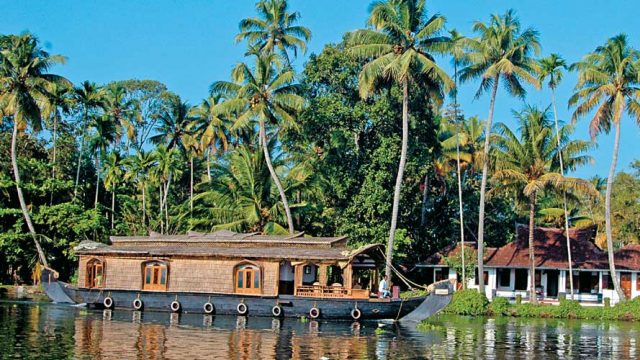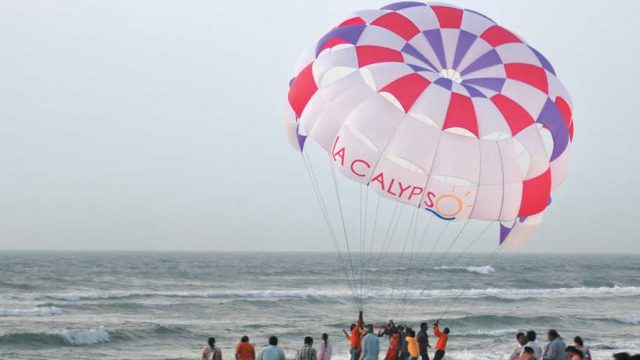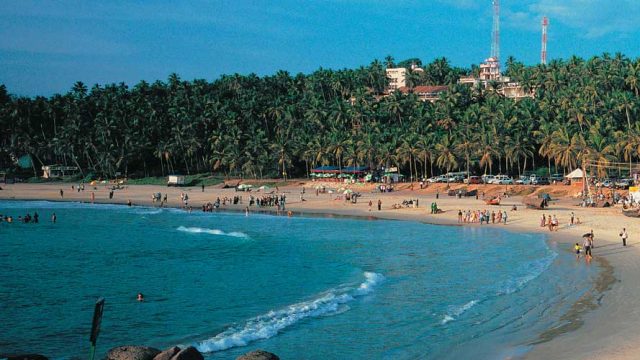The capital of India’s eastern-most state, Imphal, enjoys a beautiful setting surrounded as it is
History
Once a home of the royal families of Manipur, Imphal remained peaceful till it got occupied by the British Empire in the year 1891. The land saw many battles thereafter, including the Anglo-Manipur War in the same year, and the Battle of Imphal during World War II.
Due to its strategic location in the far east, which the British realised during the Second World War, they made Imphal their military base. The region gained independence with the rest of the country in 1947.

THINGS TO SEE AND DO
Shri Govindajee Temple
The largest Vaishnav temple in the state, Shri Govindajee Temple is located next to the Kangla Palace, the seat of the former rulers of Manipur. Its most noticeable features are two gold-plated domes on the top and a beautiful paved courtyard in the front.
The sanctum sanctorum houses the main deity, Govinda, and Radha. They are flanked by the idols of Bala-rama and Krishna on one side and Jagannath, Balabhadra and Subhadra on the other. Built in 1846 during the reign of Maharaja Nara Singh, the temple comes alive during festivals when thousands of devotees cong-regate to offer prayers here.
Ras Lila, a spectacular dance form of Manipur, is performed in the temple premises on Halangkar (Holi), Basant Purnima in February, and Kartik Purnima in October. It is a good idea to plan your trip during one of these times to catch the performances.
Kangla Palace and Fort
Located in the heart of Imphal, the Kangla Palace was once the centre of power for the Meetei rulers of Manipur, and is the most important historical and archaeological site in the state. The palace grounds once extended on both sides of the Imphal river, but now remains only on the western side.

Manipur was ruled by a long line of kings, starting from the mythical God-king Nongda Lairen Pakhangba in 33 CE. The reign of the last king, Maharaj Kulachandra, came to an end in 1891 CE, and after the British defeated the Manipur Kingdom in the Anglo-Manipur War of 1891, they occupied the Kangla Fort for more than a century.
After independence, the Assam Rifles occupied it until 2004, but were met with stiff opposition from the locals who consider the palace their shrine. In recent years, the area was declared a protected area by the state government.
Shaheed Minar
To commemorate the indomitable spirit of the martyrs of the Anglo-Manipur War of 1891, the Shaheed Minar was erected in the Bir Tikendrajit Park, which was carved out of the capital’s polo ground. The British forces had publicly hanged Prince Bir Tikendrajit Singh for waging a war against them.
War Cemetery
The Imphal War Cemetery has 1,600 graves of British, Indian, Canadian, African, Australian and Burmese soldiers, who lost their lives in the Second World War. The cemetery is maintained by the Commonwealth War Graves Commission. A bronze plaque and stone records the name and brief account of the sacrifice of each of the martyrs.

State Museum
Housing a very curious collection of artefacts, the State Museum is located very close to the polo ground. There are tribal costumes and other accessories on display. As the game of polo is said to have been invented in the ground in front of the museum, polo equipment used over the centuries are also on display here.
Other exhibits include the clothing, jewellery and other articles used by the erstwhile princes and princesses of the Manipur kingdom. An ornate royal boat measuring 78ft in length is also on display in the lawns outside the museum.
Khwairamband Bazar or Ima Market
Fondly called the Ima Market (ima means mother), Khwairamband Bazar is probably the world’s only market where all the shops are owned and run by women. The imas sell all household items, clothes, footwear, accessories, and even food. A photographer’s playground, this market is a must visit for anyone planning a trip to Imphal.
SHOPPING
If you have the time, Manipur can be a shopper’s delight.
Paona International Bazaar
One of the most popular places to shop in Imphal, Paona International Bazaar sells numerous goods brought from Southeast Asian countries. The highlight of this market is that the products are very reasonably priced, much cheaper than what you would expect. Some of the popular items here are blankets, electronics, shoes and clothes, but the market has almost everything you can think of.

Nagampal Market
Footwear, clothes and accessories, and even vegetables are available here. There are also many restaurants to enjoy a good meal.
Tera Bazaar
Located in the Greater Imphal area, Tera Bazaar is the best place to buy souvenirs. Handicraft items are readily available here and discounts are very frequently offered. If you want to avoid the crowds, visit during the week. However, a trip on the weekend will give you a chance to mingle with the locals.
GM Hall
Popular with tourists and locals alike, GM Hall sells items ranging from shawls to toys. There is no point bargaining here since everything has a fixed price. This market is located in the centre of Imphal.
Highway Market
Small shops, mostly selling local produce, are very commonly seen along the highways across the state, and are aptly called Highway Markets. A quick stoll through these markets can be quite a unique experience.

Where to stay
Excellent stay facilities are available in and around Imphal for tourists coming from all over the world. There are both government and private run hotels with modern amenities.
Options for decent accomm-odation in Imphal include Hotel Nirmala (Tel: 0385-2458904, 2459014; Tariff: ₹800–5,000) on MG Avenue. This establishment has 30 rooms and 15 suites, a restaurant, gym, Internet service and a travel desk.
Hotel Anand Continental (Tel: 2449433; Tariff: ₹1,400–1,600) at Thangal Bazaar on Khoyathong Road has 30 rooms, a restaurant, travel desk and Internet services. Hotel Yaiphaba (Tel: 2460496/ 570, Cell: 08014847496; Tariff: ₹1,900–4,500) also in Thangal Bazaar can be found on MG Avenue.
There are a couple of good hotels that are run by the Manipur Tourism Department. Hotel Imphal on North AOC (Tel: 2421373/ 2423372) and The Classic Hotel, are on North AOC (Tel: 2443967/ 2423369).
AROUND IMPHAL
Khonghamoat Orchidarium (10km)
Located south of Imphal, the Khonghamoat Orchidarium houses 110 rare varieties of beautiful orchids across 200 acres. The place is main-tained by the forest department and the best time to visit is March–April.

Red Hill (Lokpaching) (16km)
The Red Hill or Lokpaching is located on Tiddim Road and is of great historical significance. This is where the British and Japanese armies had fought an ill-fated battle during the Second World War. The battle had begun on 20 May, 1944 and had continued for nine days.
The two armies had clashed at this site in the last phase of the war. Lt. General Iwaichi Fujiwara, a Japanese war veteran had constructed ‘The India Peace Memorial’ here to commemorate the Japanese soldiers who lost their lives in this battle. It was inaugurated in 1994, on the 50th anniversary of the Battle of Imphal.
One can visit the memorial on any day of the year.
The Indigenous Sports of Manipur
The state of Manipur has had a culture of sports since ancient times. Most of the games Manipuris play today originated on this land centuries ago when small kingdoms used to engage in friendly ompetitions with each other. It is also said that the wars amongst them, and with Myanmar, led to the creation of a martial tradition, which further gave an impetus to the development of indigenous games here.
Sagol Kangjei (Polo)
Manipur is the birthplace of the modern game of polo. It is said that the Europeans had learnt the game, pana, from the Manipuris in the 19th century and had popularised a more refined version of it around the world, known as polo.
Polo spread rapidly, and by 1900 was part of the Summer Olympics. In the pana version, seven players form a team and each one of them mounts a pony. The players have a stick each, made of cane, which they use to hit the ball, which is made of bamboo root. Polo on the other hand has two teams with four players on each side. The ball is usually made of wood or plastic. The ponies are made to wear various guards to protect their head and eyes. Manipuris play both the versions in the state.
Thang Ta (Manipuri martial arts)
This martial art form was practiced by warriors, to prepare themselves for wars. Today, Manipuris learn thang ta to sharpen their movements and enhance energy. A person keen on learning this martial art form is expected to devote hours of practice and observe the rules and elaborate rituals associated with it.
Khong Kangjei (Manipuri hockey)
Like polo, khong kangjei is also a very popular game amongst the Manipuris and has been so for centuries. It is not surprising, therefore, that the state produces many hockey players every year. In khong kangjei, there are seven players on each side. Each player uses a 4ft-long bamboo stick (the indigenous form of the hockey stick) to hit the ball and pass it to other players of the same team. There are no goal posts and a goal is scored when the ball crosses the goal line. The game requires much physical stamina, speed and agility.
Yubi Lakpi (Manipuri rugby)
Manipuri rugby is played with an oiled coconut (yubi) between two teams comprising seven players each. The teams snatch (lakpi) the coconut and have to cross the goal line.
Yubi Kakpi
A traditional game of football, yubi kakpi is played with a coconut.
Mukna (Manipuri wrestling)
Considered a highly prestigious sport, mukna or Manipuri wrestling used to enjoy royal patronage in ancient times. This sport is all about the physical show of strength, in which two males wrestle. Mukna requires plenty of physical strength besides skill and agility. Two athletes of approximately the same physical build, weight and age are pitted against one another for wrestling in mukna.
All wrestlers are trained by the ‘master’, who would have received the title of ‘Jatra’ (unbeaten) in mukna.
Kang
This game takes place on a mud floor and targets fixed to the ground are hit. Players use a flat and oblong object made of either ivory or lac. Usually, each team has seven males, but women can also participate. Kang is played strictly during the period between ‘Cheiraoba’ (Manipuri New Year) and the Rath Yatra festival. Manipuris rigorously adhere to this time-frame as it is believed that the game, if played beyond this limit, can cause evil spirits to invade the minds of the players and spectators.
Hiyang Tannaba (Boat race)
Held in November every year at Thangapat and Loktak lakes, hiyang tannaba is a sport associated with religious rites. The boats called hiyang hiren are believed to be endowed with spiritual power. The Meiteis believe that worship of the hiyang hiren nullifies evil omens.
Oolaobi
Also pronounced ‘woolabi’, is an outdoor sport mostly played by women. Similar to kabbadi, the game is played between two teams and the raiders enter the opponents’ court saying ‘oo’ without losing their breath.According to Manipuri mythology, this game was a favourite of the gods, and was played in the courtyard of the temple of Umang Lai, a Manipuri god.
Archery
Archery is one of the most ancient sports to have originated in India, and much like in other parts of the country, it is popular in Manipur as well. The equipment used in this sport is a bow and arrow. The bows are made of bamboo and are of varying lengths and sizes. The arrows have pointed metal caps. A range of 100m is usually set for archers to aim and hit the bullseye.
Bishnupur (29km)
Home to numerous ancient temples and deers, Bishnupur is a beautiful destination to spend some time in. Situated southwest of Imphal, the city offers plenty of tourist spots such as the Keibul Lamjao National Park, Loktak Lake and the Loukoi Pat Ecological Park. The beauty and diversity of Bishnupur makes it one of the most visited cities of Manipur.
The temples reflect the rich culture of the land and the architectural excellence leaves onlookers stunned. The 15th century Vishnu temple here is very famous. The city is also famous for tribal handicrafts.
Loukoi Pat Ecological Park (32km)
Situated near Tiddim Road on NH150, Loukoi Pat Ecological Park was opened in the year 1992 and houses a Rock Garden, Hawa Ghar, Circular Path and a Japanese Pond. The park also has a beautiful freshwater lake within its premises, which is surrounded by hillocks. The Bishnupur Bazaar is nearby. Boating facility is available on the lake and families are often seen picnicking here.
Contact the tourist office for visiting arrangements
One can stay at the Government Rest House or at the Tourist Lodge in Bishnupur.
Khongjom War Memorial (39km)
Situated on top of the Kheba Hill on the Indo-Myanmar Road, southeast of Imphal, the Khongjam War Memorial is another important historical dest-ination in Manipur.
The small hill, on the foot of which valiant fighters lost their lives in the Anglo-Manipur battle in 1891, speaks volumes about their heroic deeds. Locals congregate at the memorial every year on 23 April to pay homage to the martyrs.
Mutua Museum in Andro Village (26km)
Nestled in the foothills of the Nong-maiching Hills of Imphal, lies a small, ancient village called Andro. The short drive from Imphal is worth undertaking. The Mutua Museum is a much-frequented cultural complex inside the village where artefacts from across the Northeast are on display. Pottery, rare coins, manuscripts pertaining to the origin and history of the state, paintings, jewellery, clothing, wood carvings and also a miniature replica of tribal homes are showcased here.
Moirang (45km)
The largest town of Bishnupur district, Moirang is located south of Imphal, on NH150. The town is close to the beautiful Loktak Lake and there are many activities for tourists to indulge in here.
FAST FACTS
When to Go Any time of the year; except the monsoon (June–October) Tourist Office
Tourist Information Centre, Directorate of Tourism, Imphal, Tel: 0385-2421046, 2450038, STD code 0385
GETTING THERE
State Manipur
Location At 790m, on the Imphal river bank; 145km S of Kohima
Distance 484km SE of Guwahati
Route from Guwahati Take NH37 to Nagaon via Dispur, then NH36 to Dimapur, and NH39 (Indo-Burma Road) to Imphal via Kohima, Karong and Kangpokpi
Air Nearest airport: Tulihal Airport (7km/ 30mins) is connected to Delhi, Mumbai, Kolkata and Guwahati. Taxi ride to Imphal costs ₹400–500. This is the best option. Rail and road journeys must be taken with caution due to uncertain political conditions in Manipur
Rail Nearest railhead: Dimapur (219km/ 7hrs) in Nagaland, is linked to Delhi, Kolkata, Bengaluru and Guwahati. Taxi ride costs ₹4,000–6,000 a day, and includes charges of fuel, vehicle and driver. Rates are variable according to season
Road Imphal is connected to all major cities in the Northeast, but the hilly road journeys are tough, and often unsafe.From Guwahati (482km/ 8hrs), NH37 to Nagaon; NH36 to Dimapur; NH39 (Indo-Burma Road) to Imphal
The Northeast Guide
India
Manipur





